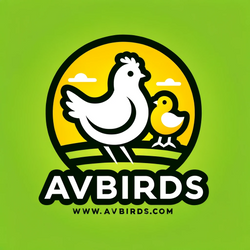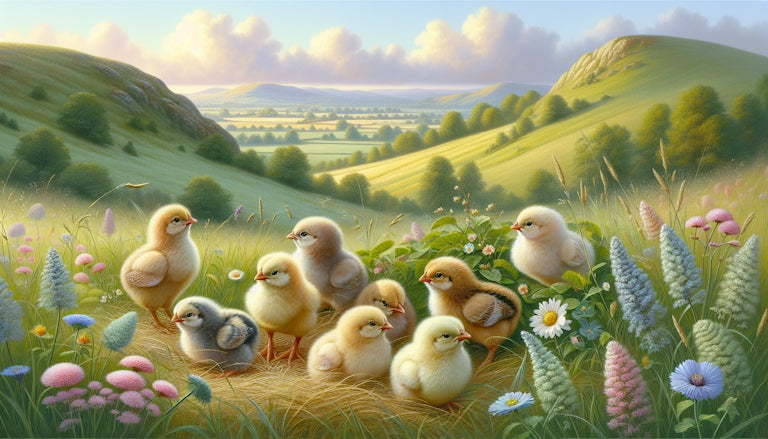Easter Egger chicks bring a burst of color and personality to any backyard flock. Picture this: you’re collecting eggs at dawn, and instead of plain browns, you spot shades of sky blue, soft green, even pastel pink. These hybrid birds have taken off among backyard keepers thanks to their unique looks and steady egg output.
In this guide, I’ll walk you through everything you need to know about these colorful chicks, from quirky genetics and egg palette to housing tips and purchasing options. Whether you’re a first-time keeper or a seasoned chicken fan, your next flock star could be waiting in a brooder right now. Let’s get cracking.
Easter Egger Basics
What Are Easter Eggers?
Ever wonder what sets these chicks apart? Easter Eggers are barnyard hybrids born from crossing a blue-egg producer with a brown-egg layer (Backyard Chickens). Since they aren’t an official breed, each chick can surprise you when it feathers out.
Breed Recognition Status
Here’s the thing, Easter Eggers aren’t on the American Poultry Association’s roster. That means no strict size, plumage, or comb standard. You might see greenish legs, poofy cheeks, or a single comb on different birds.
Understand Their Genetics
Blue and Brown Genes
What’s behind all those egg colors? It starts with the blue egg gene from Araucanas or Ameraucanas. Breeders cross that with a brown egg layer, like a Rhode Island Red or a Barred Rock. Voilà, you get a rainbow of possibilities (Backyard Chickens).
Pigment Interaction Explained
Eggshell hue depends on two pigments. Oocyanin gives blue tones, protoporphyrin adds brown. When these pigments mix at varying levels, you see shades of green, olive, or pink (Chicken Coop Company Blog). The color you get will stay the same for that hen’s life.
Explore Egg Color Variety
Common Egg Shades
Egg colors range from sky blue and jade green to pastel pink, tan, or even chocolate brown. Every chick can surprise you with its shell hue. Which shade will your first batch deliver? Let’s be honest, hunting for a new color is half the fun. If a rainbow of shells excites you, explore other colored egg layers blue green chocolate for more ideas.
Laying Consistency
Easter Eggers lay reliably, usually around 4 eggs a week. That adds up to about 200 eggs per year after they reach 5 to 7 months old (My Pet Chicken). They tend to keep the same shell shade for life. And though their diet can shift yolk brightness, it won’t change that shell color.
Discover Friendly Personalities
Temperament Insights
Chickens can be fun, but Easter Eggers are especially curious and gentle. They roam your yard, pecking at bugs, and often come running when they spot you. They’re known to be good with kids and other animals.
Ideal Flock Companions
Looking for a bird that plays nice with your Rhode Island Reds or Barred Rocks? Easter Eggers usually fit right in. Since they aren’t bound by strict breed norms, you might notice variations, but their social, docile nature rarely causes drama.
Provide Proper Care
Brooder Setup Tips
Not sure how to set up your brooder? Your brooder is home for the first few weeks, so you want it snug and safe. Here’s what you need:
- A sturdy brooder box or bin with walls at least 12 inches tall
- Clean pine shavings or paper towels for bedding
- A heat lamp or brooder plate set at about 95°F under one side
- A chick waterer with marbles or stones to prevent drowning
Gradually lower the heat by 5°F each week until they can handle adult coop temperatures.
Feeding and Nutrition
Chicks need a starter feed with around 18 percent protein to support healthy growth. You can offer crumble-style feed for easy eating. Always provide fresh, clean water. As they grow, switch to a grower feed at 8 weeks and then layer feed at 18 to 20 weeks.
Find Your Chicks
Ordering Day-Old Chicks
Ready to start? You can find day-old chicks for sale online, including Easter Eggers. Many hatcheries offer both straight-run and sexed pullet options. Look for low minimum orders if you’re testing a small flock.
Other Purchasing Options
If you want to skip the brooder stage, check out started pullets for sale. You can also buy hatching eggs for sale and incubate at home. Some keepers swap hatches with neighbors to trade varieties like olive egger chicks.
Summary and Next Steps
Final Thoughts
Bring Easter Egger chicks into your flock and you’ll get friendly birds plus a colorful egg haul. Remember their hybrid status means no two look alike, so expect surprises. Keep their brooder snug, feed quality starter feed, and secure that heat just right.
Here are your quick action items:
- Clean the brooder daily and adjust heat gradually
- Use a high protein starter feed until 8 weeks
- Handle chicks gently to build trust
- Enjoy the colorful eggs and friendly company
Which step will you try first? Share your progress in the comments below so we can all celebrate those beautiful shells together.

